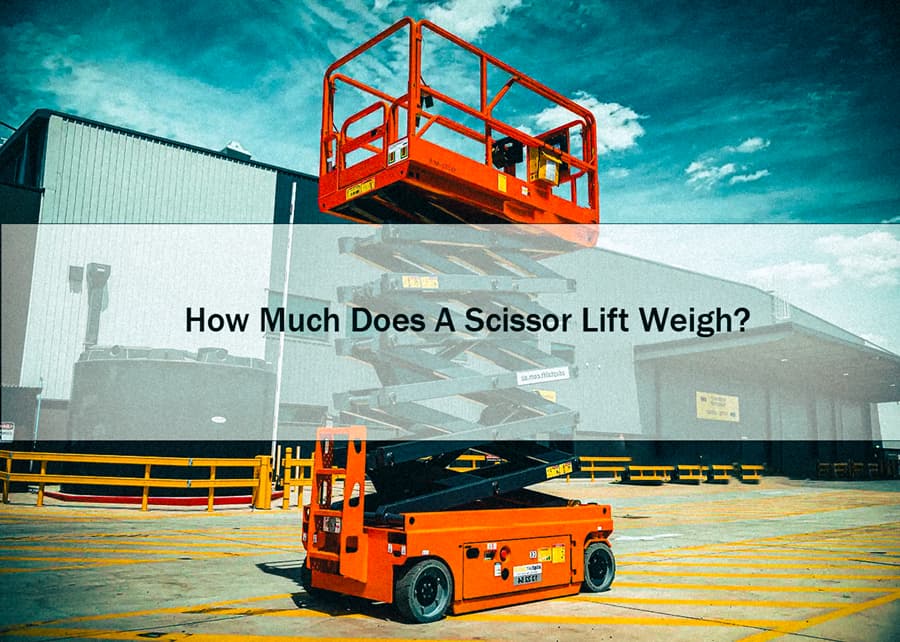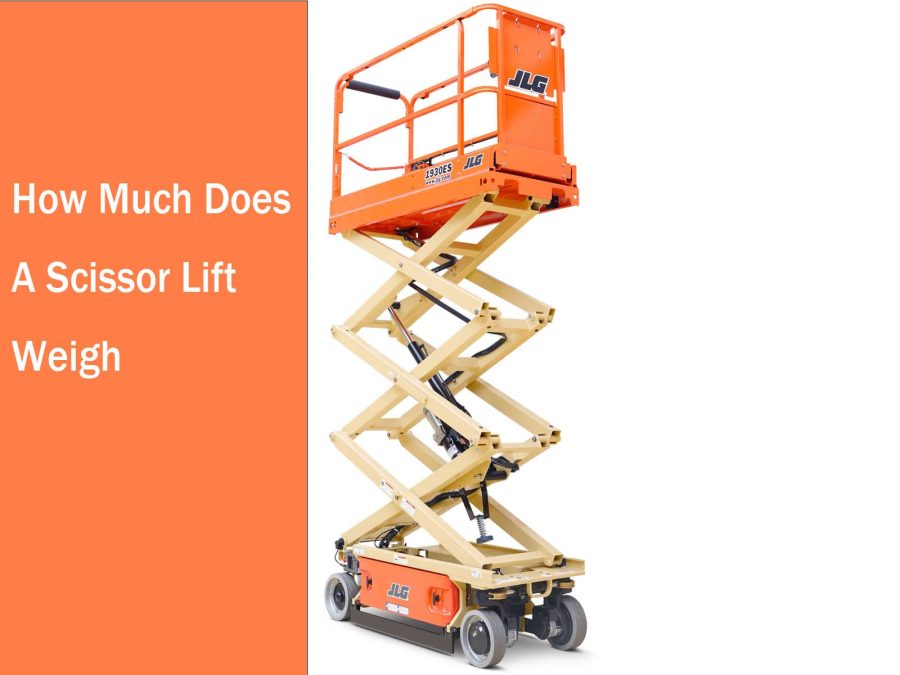Table of Contents
When you need to reach a ceiling to perform maintenance, a ladder obviously won’t cut it! That’s where the mighty scissor lift comes in. A scissor lift is a versatile piece of equipment that is essential for safely lifting people and equipment to heights. But the seemingly simple question of “how much does a scissor lift weigh?” does have a complex answer. There are many factors that influence the weight of a scissor lift, such as size, power source, material composition, and additional features.
In this article, Holdwell will explore these factors in detail to gain a comprehensive understanding of what determines the weight of a scissor lift. In addition, we will discuss why knowing this weight is critical for transportation, surface load limits, and overall project planning.

Factors Affect Weight of Scissor Lifts
When considering the weight of a scissor lift, it is important to understand the various factors that affect its overall weight.
Size and Lifting Capacity
One of the most important factors that affect the weight of a scissor lift is its size and lifting capacity. Scissor lifts come in a variety of sizes, from compact models designed for indoor use to large, sturdy machines used on outdoor construction sites. Larger platforms and the ability to reach greater heights require sturdier, more stable structures, which inevitably leads to increased weight.
Power Source
The power source of a scissor lift also plays a key role in determining its weight. Scissor lifts can be powered by a gasoline, diesel engine, or electric motor, each of which affects weight differently. Gasoline/diesel scissor lifts typically have a higher weight due to their larger engines. Electric scissor lifts are generally lighter than internal combustion engine lifts.
Material Composition
The materials used to manufacture a scissor lift have a significant impact on its weight. Traditionally, many scissor lifts have been made from steel because of its strength and durability. However, steel is heavy, and using it in large quantities can add weight to a lift. Aluminum lifts are becoming more popular in the market, reducing weight without sacrificing strength.
Additional Features
Finally, additional features and accessories can greatly affect the weight of a scissor lift.
Outriggers: These stabilizers increase the safety of the lift while also adding weight.
Safety bars: Necessary safety features that add weight but protect the operator.
And various accessories such as tool trays, platform extensions, and load sensors can also add weight to a scissor lift. Each feature adds functionality and efficiency for a specific task, but also adds weight to the scissor lift.
Understanding these factors is not only essential for choosing a scissor lift that fits your needs, but also for logistical considerations. Weight affects transportation, the surface on which the lift can be used, and even storage capabilities.

Weight Ranges and Examples
Scissor lifts come in a variety of models and sizes, each designed to meet specific needs and operating environments. Factors such as size, lifting capacity, power source, material composition, and additional features can cause these machines to vary greatly in weight. Let’s take a closer look at scissor lift models from popular brands such as Genie, Haulotte, and JLG, and compare their weights to get a clearer picture.
Genie Scissor Lifts:
Genie scissor lifts are known for their versatility and reliability, and are widely used in both indoor and outdoor environments. The Genie GS-1932 weighs approximately 2,702 pounds (1,226 kg) and has a lifting capacity of 500 pounds (227 kg). At the high end, the Genie GS-4390 RT weighs approximately 15,652 pounds (7,101 kg) and has a lifting capacity of 1,500 pounds (680 kg).
Haulotte Scissor Lifts:
Haulotte offers a range of scissor lifts known for their rugged design and efficiency. The Haulotte Compact 2668RT weighs approximately 4,370 lbs (1,982 kg) and supports a load capacity of 1,500 lbs (680 kg). Meanwhile, the larger Haulotte H18SX model weighs approximately 15,432 lbs (7,002 kg) and has a lifting capacity of 1,900 lbs (861 kg).
JLG Scissor Lifts:
JLG scissor lifts are known for their durability and high performance. The JLG 1930ES model is very popular and weighs approximately 2,700 lbs (1,225 kg) with a load capacity of 500 lbs (227 kg). On the other hand, the JLG 4394RT is a heavier-duty lifter that weighs about 14,800 pounds (6,713 kg) and has a maximum capacity of 1,500 pounds (680 kg).
Weight Variation
The weight of a scissor lift can vary greatly. Compact models such as the Genie GS-1930 and JLG 1930ES are relatively light and are ideal for indoor use where space and surfaces are limited. More rugged models designed for heavy-duty outdoor tasks, however, such as the Haulotte H18SX and Genie GS-4390 RT, are significantly heavier if you need a scissor lift for heavy-duty outdoor tasks.
All in all, scissor lifts come in a wide range of weights, generally from around 2,700 pounds (1,225 kg) for smaller models to over 15,000 pounds (6,800 kg) for larger, high-capacity machines. These variations are influenced by a variety of factors, including size and lifting capacity, power source, materials used, and additional features. Understanding these differences can help you choose the right scissor lift for your specific needs.
Why the Weight of a Scissor Lift Matter

Transportation:
Knowing the weight of a scissor lift is essential to making smart hauling decisions. When choosing the right trailer, the weight of the lift helps ensure that the trailer can handle the load without compromising safety. Overloading a trailer can lead to dangerous towing situations that can cause accidents or mechanical failures.
Surface Load Limitations:
Ground bearing pressure is a critical factor when operating a scissor lift, especially indoors or on surfaces with limited load capacity. Knowing the weight and how it is distributed across the tires or tracks of the lift ensures that the surface can support the lift without any risk. This knowledge is especially important in environments such as warehouses, shopping centers, and other floor-sensitive buildings.
Overall Project Planning:
Weight is a fundamental aspect of logistics and project planning. Because shipping and handling costs are often based on weight, accurate weight information can help with cost estimates.




